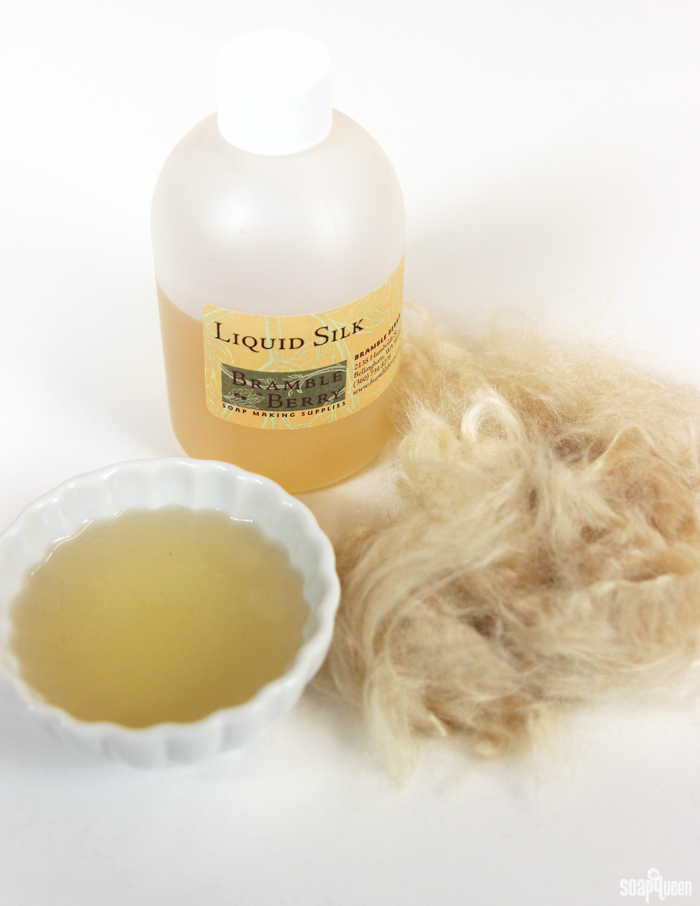 Soft and luxurious, silk is produced from caterpillar-like insects called silk worms. In bath and body products, liquid silk and Tussah silk fibers are added for a soft “silky” feel. Liquid silk is perfect for water based products such as lotion and emulsified scrubs. Small amounts can also be added to melt and pour soap. Tussah silk fibers can be dissolved in your lye solution and added to cold process soap.
Soft and luxurious, silk is produced from caterpillar-like insects called silk worms. In bath and body products, liquid silk and Tussah silk fibers are added for a soft “silky” feel. Liquid silk is perfect for water based products such as lotion and emulsified scrubs. Small amounts can also be added to melt and pour soap. Tussah silk fibers can be dissolved in your lye solution and added to cold process soap.
The silk making process starts once the silkworm begins to construct its cocoon. Silkworm have glands on the mouth part of their body that produce a clear, proteinaceous fluid called fibroin. This fluid becomes hard once exposed to air. The silkworm rotates its body in a figure-8 motion while producing the protein material, which forms a cocoon around its body. Building the cocoon takes about 3-8 days.
Once the cocoon is complete, the silk can be harvested. In order to obtain the longest strands of silk fiber, some silk is harvested by boiling the cocoons with the worms inside. Tussah silk fiber sold at Bramble Berry is cruelty free and collected after the worms have left their cocoons. That causes the fibers to be short.
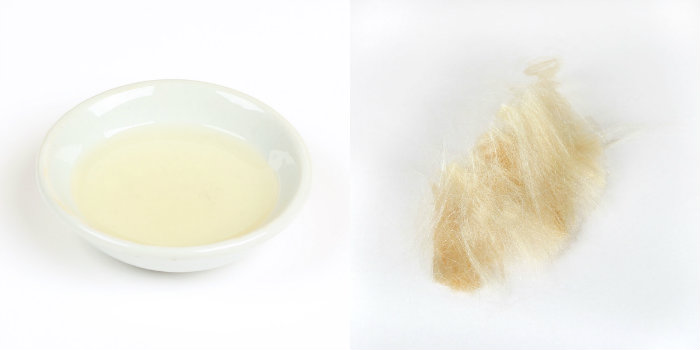 Left to right: Liquid Silk, Tussah Silk Fiber
Left to right: Liquid Silk, Tussah Silk Fiber
The addition of Tussah silk fibers to cold process soap gives a luxurious “silky” feel. It also contributes to a slightly more shiny appearance and is great from a marketing standpoint. Because silk fibers are a little tricky to weigh or measure precisely, we recommend a small pinch per pound of soap.
To use the silk fibers, add them directly into your lye solution, immediately after the lye is dissolved. Your lye water should be around 170-190 ° F. The hotter the lye solution, the easier the fibers will dissolve. Then, stir, stir stir…and keep stirring! This process will take several minutes.
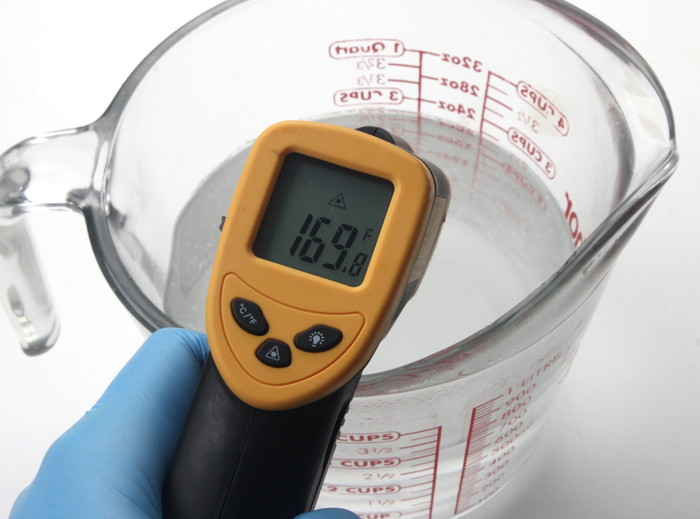 You’ll notice immediately that some of the fibers will start to dissolve. But, some of the fibers may clump together. If this happens, firmly press the clump against the container with your spoon to break it up. Breaking the clump apart will help the silk to dissolve faster.
You’ll notice immediately that some of the fibers will start to dissolve. But, some of the fibers may clump together. If this happens, firmly press the clump against the container with your spoon to break it up. Breaking the clump apart will help the silk to dissolve faster.
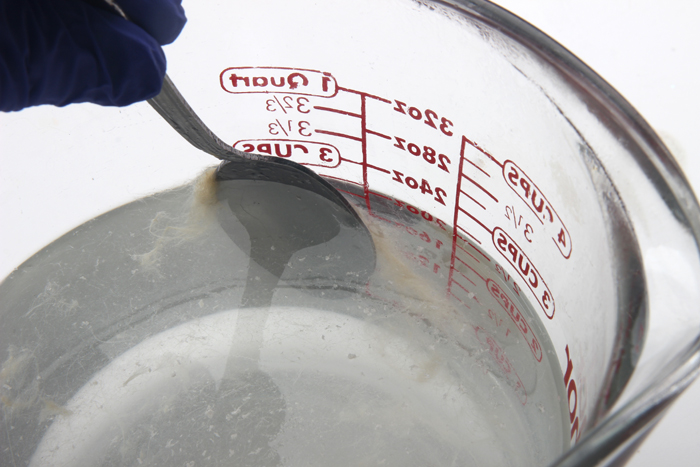 You may notice very small pieces of the lye fibers still in your lye mixture. This is fine. Allow your lye mixture to cool and use as normal.
You may notice very small pieces of the lye fibers still in your lye mixture. This is fine. Allow your lye mixture to cool and use as normal.
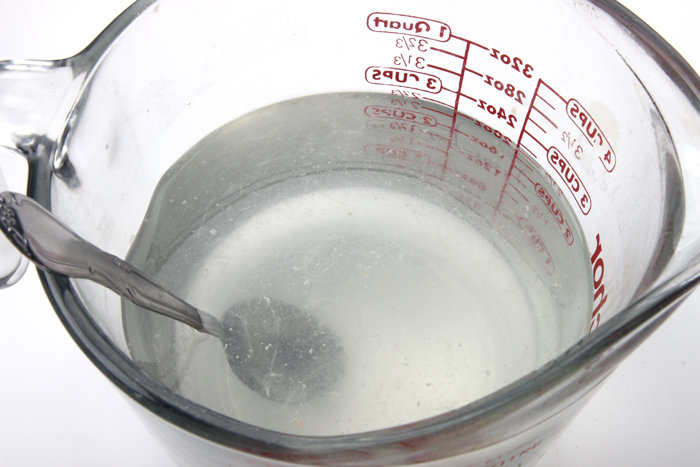 Liquid silk can also be used in cold process soap up to 5%. Because the liquid silk it already dissolved, you can add it directly to your soap at trace. When making emulsified scrubs or lotions, add the silk with a usage rate of 1% during the water phase. If adding to melt and pour, add the liquid silk at a rate of 1/2 tsp. per pound of melt and pour soap.
Liquid silk can also be used in cold process soap up to 5%. Because the liquid silk it already dissolved, you can add it directly to your soap at trace. When making emulsified scrubs or lotions, add the silk with a usage rate of 1% during the water phase. If adding to melt and pour, add the liquid silk at a rate of 1/2 tsp. per pound of melt and pour soap.
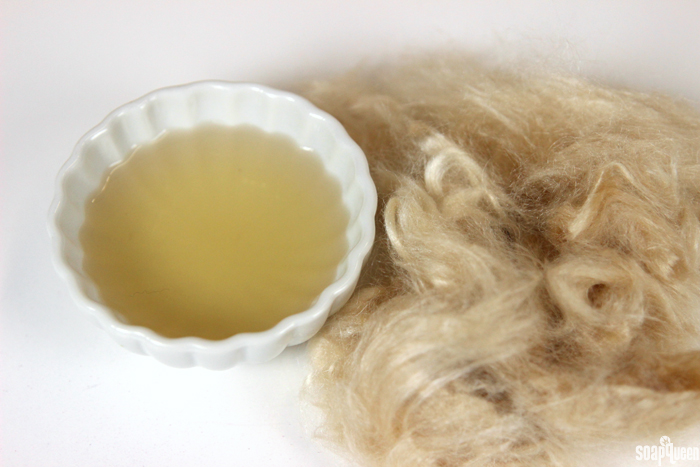
If you’re looking for some lotion or scrub recipes to use your liquid silk, check out the Soaks & Scrubs and Lotion categories. The Emulsified Sugar Scrub tutorial on Soap Queen TV would be perfect for liquid silk; simply add the silk into the distilled water. Liquid silk would feel fantastic in the Rose & Aloe In-Shower Lotion as well.
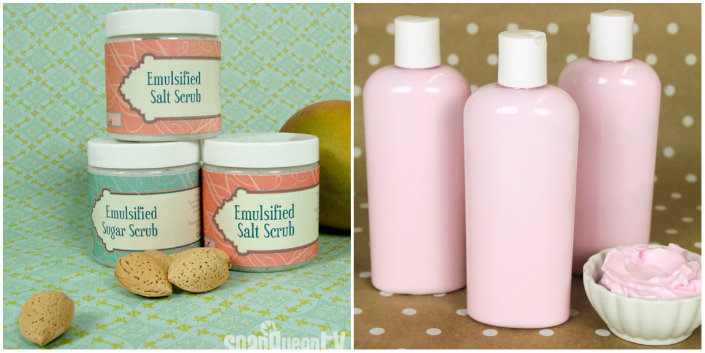
Have you used liquid silk or Tussah silk fibers in your soapy projects? I would love to hear what you thought of it!




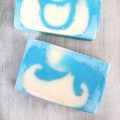
Hi
I know this is an old thread but I have some silk fibres but don’t know how much to put in my soap. Recipes tend to say a “pinch” but I’m not sure how much that means. I realise that the silk is so fine that you can’t really weigh but can you give some indication on the right amount to use?
Thanks
Hazel
Because silk fibers are really light, it’s hard to give you a weight range. Just grab a nice pinch of fibers and that will work well! You can see an example in this video: https://www.youtube.com/watch?v=Ea-UXZMXM1I&t=48s
-Kelsey with Bramble Berry
I was wondering what happens if you use too much? Since it is hard to measure, should I try to be careful not to use too much or is it just that you don’t need more than that to achieve the benefits?
Using too much won’t affect the feel of the soap! It will still feel nice and silky. Try to measure as best as you can, and if you do a bit more than a pinch it will be just fine. 🙂
-Kelsey with Bramble Berry
I used some liquid silk in my lotion but it came out really think and liquidy. I put it in at around 3% before I put my water in the microwave, but I did everything else the same as normal. Do y’all know why that might have happened?
Because the liquid silk is dissolved in water, it can make the soap a bit thinner than usual. It can help to decrease your water slightly in the next batch. For your batch now, you may try thickening it with stearic acid! You can heat your lotion now to around 130F (don’t go much hotter or the preservative may degrade). Then, melt around .5 oz. of stearic acid to start with, add to the warm lotion and stick blend for a few minutes. If you want it thicker, you can add a bit more stearic acid. 🙂
Stearic acid: https://www.brambleberry.com/Stearic-Acid-by-weight-P4210.aspx
-Kelsey with Bramble Berry
I am rather new to CP soap making and find the topic of adding liquid silk or silk fibres intriguing but am curious about the cost factor. I make soap in about 3 1/2 pound loaves. How much silk fiber or how much liquid if I chose that route would I need to add to each batch? Also I see that the fiber is sold by the ounce so approximately how many batches per 3 ounce would I get?
Because you only need a small pinch of Tussah silk fibers per batch, 3 ounces will last you a long time! They aren’t dense so 3 ounces fills a pretty large bag. I would say you can get at least 10 batches, probably a lot more. 🙂
-Kelsey with Bramble Berry
Hi 🙂
I’ve noticed you’ve said liquid silk can be used up to 5% in a liquid soap recipe, but is that 5% of the oils alone, or the paste?
Many thanks 😀
Hi Troy!
You can do 5% of the weight of the paste for a super silky soap, or 5% of the weight of the diluted soap. Either way works fine. You may try both to see which one you prefer. 🙂
-Kelsey with Bramble Berry
Hello, I make all of my soap using goats milk. I read above where you suggested dissolving in water and then adding that to the milk. I was just curious, would it dissolve in the milk if you heated the milk and added the silk before freezing for soap?
Im wondering the same thing, how can this be correctly incorporated in a CO milk soap?
Hi Kay and Amanda!
That’s a great question. Because you don’t want to get the milk too hot, I would recommend heating up an ounce or two of distilled water. Then, dissolve the silk into that. Let it cool, then add that to your lye and milk mixture. Make sure to discount that water so the soap isn’t too wet!
You can also use liquid silk, which has already been dissolved. You can use it up to 5% and add it at trace. 🙂
-Kelsey with Bramble Berry
can i use liquid silk in cold process soap and when to add to the soap please
Absolutely! You can use it up to 5% of the total weight of the soap and add it at trace. 🙂
-Kelsey with Bramble Berry
Hi There!!
Love your site!! Very informative!
I have a question can you add liquid silk in hot process soap ? Would you add at trace or after it cools ( when you add the fragrance) thanks in advance!
Thank you Rita, glad you love the site! 🙂
You can definitely add liquid silk to hot process soap. You can use it up to 5% in soap. We recommend adding that at light trace. So after the soap is emulsified but still quite thin, add the liquid silk. Then, stick blend until thick trace and continue to cook the soap!
-Kelsey with Bramble Berry
I bought soap paste from Bramble Berry to make liquid hand soap. Is there a way for me to add silk into my liquid hand soap? If so, how?
Hi Lily!
You can definitely add silk to the liquid soap base! I would recommend using liquid silk. It’s already dissolved, so it’s easy to add. I would recommend mixing it in with the water used to dilute the soap. Then, you can pour the water and liquid silk mixture into the paste. You can use it up to 5% in your recipe for a nice silky feeling. 🙂
Liquid silk: https://www.brambleberry.com/Liquid-Silk-P4097.aspx
-Kelsey with Bramble Berry
I use tussah silk in my shampoo bars, along with argon oil. Love the way it conditions my hair to a nice silky sheen. One of my shampoo bars is also made with local goats milk and egg yolks. I generally use all goatsmilk with no distilled water in my goatsmilk recipies, but because I wanted the tussah silk in this particular bar, I did add some water and lye to melt the silk.
That sounds so luxurious! Argan oil and silk would make your hair feel so nice. Goat milk adds some nice creaminess too. 🙂
-Kelsey with Bramble Berry
Aragan oil: https://www.brambleberry.com/Argan-Oil-P5574.aspx
Wow that sounds amazing and I would love to know your recipe! Would you be so kind to e-mail me your goats milk and silk recipe with percentages or how ever you like. I would LOVE TO TRY IT OUT!! I love making goats milk and even coconut milk soaps with Shea and cocoa butters, and love to super fat around 7. I need the extra moisture and conditioning for my young children as they have very sensitive dry skin due to eczema. Here’s my e-mail [email protected]. I would greatly appreciate it. God bless.
I would love to try this also for my daughter who has gery troubled skin since she was a baby. [email protected] thank you!!
Hi, Kelsey! I’ve used silk fiber for a while now, and I was over the moon when Bramble Berry started to carry it. But I’ve always wondered about something: I strain my lye solution if I see tiny fibers (just like your third photo with the Pyrex cup). From your post, it sounds like straining is not necessary. Does anyone have experience with straining versus not straining? Thanks very much!
Hi Cid!
In our tests and recipes, we have found that tiny silk fibers remain in the lye solution. We don’t strain them out, as we have found they mix in with the soap. You can strain them if you like though. 🙂
-Kelsey with Bramble Berry
Is liquid silk lip safe? I think adding silk would make a great addition to lip balm!
Hi Chelsea!
I don’t believe it’s lip safe, but I’m not 100% sure. I emailed our vendor to see if they have more information! Once I hear back from the vendor I’ll contact you. 🙂
-Kelsey with Bramble Berry
Hi brambleberry team!
So glad I stumbled onto this post! One thing I am curious about, since the lye has to be around 165 for the fibers to dissolve, how would you add it so soap using milk, using the ice cube method? Would it be at the same time you add your lye into the cubes? Is that too cold? I would love to add silk to all my soaps, hopefully you still can with milk soaps…thank you!
Hi Amaia!
Glad you enjoy the post! Because your lye milk mixture is colder, it can be difficult for those fibers to dissolve fully. What you can do is heat up regular distilled water and add the fibers. When they’re dissolved, let that water cool. Then, you can incorporate it in with your frozen milk, or add the water at trace. Just make sure to discount the amount of milk you use so that soap isn’t too soft. 🙂
You can also use liquid silk in your cold process soap up to 5%. It has already been dissolved, which makes it easy to add!
-Kelsey with Bramble Berry
I am new to soap making, but couldn’t you use powdered milk for this silk recipe instead. That way you do not run the risk of your milk scolding. Add the silk to Hot water, allow to cool, add powdered milk, then freeze.
Hi Tia!
We haven’t tested that method out! My worry is that as soon as the lye is added to the milk powder, it may get extremely hot and scald, as the milk activates the lye again. Also, it may be difficult to mix the milk into the lye. I would recommend making a small test batch to see if that works for you.
Liquid silk would work as well! It has already been dissolved. 🙂
-Kelsey with Bramble Berry
I have used goat milk powder to make soap for several years. Here is my method and one I’m going to use with the tussah fibers that I just got in. I measure out the distilled water with the exception of 100 grams of the required liquid for my soap recipe. I add the lye (and tussah fibers) to this discounted water. (I soap at room temperature because it’s convenient for me.) After the lye solution is room temperature, In a separate container I add the remaining 100 grams of distilled water and mix in the Goat’s milk powder. I pour the milk solution in my oils along with the lye solution. It’s the best method I’ve tried over the years and one that fits my recipe to a “T”. Hope that helps and gives you a way to use milk powder and tussah fibers for a fabulous soap!
Hi,
Do these silk fibers dissolve in hot water as well, or only in lye?
I want to try to make a lotion with the fibers but I see them being blown up in the air with the steam in stead of being dissolved…
With kind regards,
Annemieke
Hi Annemieke!
These fibers should dissolve in hot water as well! Just make sure to break them up into small pieces and stir well. That way they don’t clump up and have trouble melting. 🙂
You may also like liquid silk! The silk fibers have already been dissolved, making them easy to add to your lotion. You can use liquid silk up to 1% in your recipe.
Liquid silk: https://www.brambleberry.com/Liquid-Silk-P4097.aspx
-Kelsey with Bramble Berry
Thanks for the advice, Kelsey. Happy to know that they can dissolve in water. I will try to clip them even more, next time. And break the lumps up of course… Wow that such strong fibers can be made by a caterpillar…
Our local store does not sell your liquid silk yet. But when they do… I will try it. Is the liquid silk cruelty free as well?
With kind regards,
Annemieke
Hi Annemieke!
You’re welcome! I love using the liquid silk. 🙂
I’m not entirely sure if that product is cruelty free! I emailed our vendor to find out more. Once I hear from them, I’ll contact you!
-Kelsey with Bramble Berry
Hi Annemieke!
I just heard back from our vendor, and our liquid silk is not cruelty free. The Tussah silk is though.
Hope that helps! 🙂
-Kelsey with Bramble Berry
I’m in the process of formulating my first cp soap recipe and would like to use liquid silk. This is not listed in the lye calculator. Is there another oil with similar properties or SAP that I can plug in to the recipe to get my lye percentage correct?
Hi Helen!
Liquid silk is considered an additive. That means you don’t have to calculate it in your base oils! To use it, you can add it at trace, or when your oils and lye are emulsified (the same time you add fragrance and color). We recommend about 1/2 tsp. of liquid silk per pound of soap. 🙂
-Kelsey with Bramble Berry
Hi Kelsey .
I LOVE to use silk in my soaps. It give’s the soap more lether,and the soap feels great! I cut the silk short before I put it in the lye,and use 2 grams (size of a cottonball) of silk on 1000 grams of oils. Love you’re site !! 🙂
So glad you love using it, I do too! It gives the soap such a luxurious feeling. From a curious kid perspective, I like watching it dissolve too. 🙂
Also, so glad you love the site! Thanks for reading!
-Kelsey with Bramble Berry
Thank you so much Alice. I was really looking for a definite measurement to use silk in soap and everywhere else says a size of a peas or cotton ball. I’m a measurement freak and you really help me a lot.
Thanks
Can you add the Tussah Silk Fibers to M&P soap?
Hi Stef!
Tussah silk fibers won’t dissolve in melt and pour, but you can definitely use liquid silk! You can use about 1/2 tsp. per pound of soap. 🙂
-Kelsey
Liquid silk: https://www.brambleberry.com/Liquid-Silk-P4097.aspx
Thank you very much for the quick response!
I love using silk in my soaps! It really does add nicely to the feel of the soap 🙂
Me too Margaret! I love the way it glides on my skin, and the soft feeling it leaves. 🙂
-Kelsey with Bramble Berry
Well now I know what else I have to put on my shopping list for the next trek to Otion.
Silk feels really awesome in your soap! Have fun trying it out Monica. 🙂
-Kelsey with Bramble Berry
This is great! I would really like to add this to some of my soaps! How much would you use of the silk fibers/pound in CP soap? Thanks in advance!
Hi Jessica!
So glad you like the post! Because the silk is so light and fluffy, it’s tricky to get an exact measurement. We recommend using a small pinch per pound of soap. It also helps to cut the fibers before adding them to your lye so they dissolve more easily. 🙂
-Kelsey with Bramble Berry
I’ve looked for a cruelty free silk but have been unhappy with the results. I’m so glad yours are cruelty free. I’ve been wanting to add silk to a new line of soaps and lotions. Now I can! Thank you.
You’re welcome Emm! It’s something that’s very important to us. The fibers still work really well too! 🙂
-Kelsey with Bramble Berry
I am newly interested in making my soaps, lotions, & hair products. I hope this site will be a assistance in these arenas.
Absolutely! We are happy to answer any questions you may have. We also have lots of tutorials for soaps, lotions and hair products. Let me know if you need any help. 🙂
-Kelsey with Bramble Berry
Hi,
Also I am very happy with this information. Up until now I did not buy the product since I don’t want to use products that animals have been killed for just for my hair feeling a bit softer. I am not a vegetarian, but I draw the line with killing animals just for my convenience.
I am going to order your product (the Tussah silk) from a local store that sells Bramble Berry’s products. Unfortunately they only write the product is made from animals’ cocoons. I was unaware it was cruelty free…
With kind regards,
Annemieke
Hi Annemieke!
So glad you like the post! If you ever have any questions about our products, feel free to ask! We are more than happy to answer those for you. Have fun using it in your recipe. 🙂
-Kelsey with Bramble Berry
I’m glad you wrote about this. After I bought it from you back in December, I wasn’t sure how to use it. I found some info on line, so I used about cotton ball size in 3 lbs of soap (your 10 inch sil. mold). I put it in the lye water, but around 165. It took FOREVER to dissolve. I even reheated it a couple of times. 🙂
I made the soap using your Mint Chocolate Chip FO for almost all, letting it discolor, and a little bit for the top with Mint EO, colored green. Looks great, but will have to wait and see if it feels silky.
I just read on Kenna’s website, to use the amount about the size of your top knuckle on your pinky for 3 lbs of soap, and that it helps to cut it up even smaller with scissors. Will have to try that next time.
Hi Martina!
So glad you like the post! The silk fibers do take quite awhile to dissolve. It helps to break them up before adding to your hot lye water. Although it can take a bit, we love the silky feeling it leaves on your skin. 🙂
Have fun experimenting more with silk! Let us know how it goes. 🙂
-Kelsey with Bramble Berry